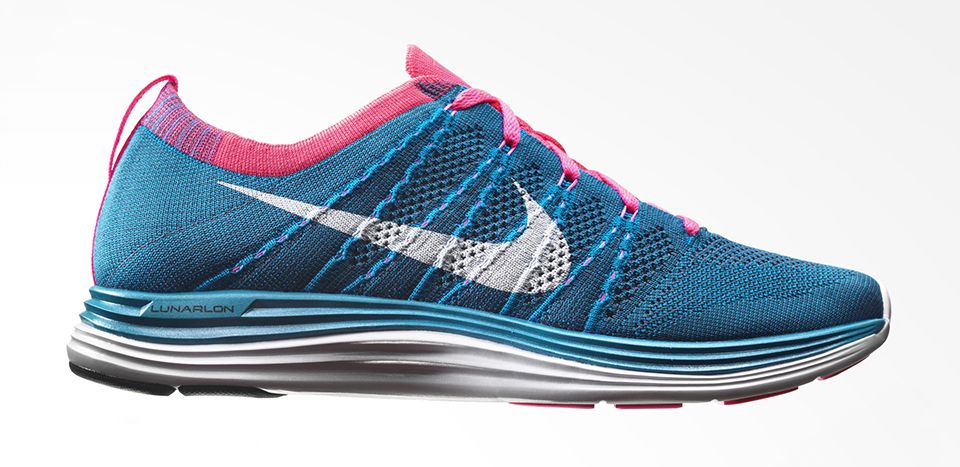Mo Farah’s jaw-dropping 10,000 metre gold medal at the London 2012 Olympics was backed by some of the most cutting-edge technology in sport. It took quite a set of trainers to catapult him over the finish line in gold medal time. His weapon of choice was the Nike Zoom Victory Elite: weighing just 104g, the trainer is the top of the line running kit from Nike.
That tech is now being translated into a more-affordable package. Due out in January, the Nike Flyknit One+ promises to be as big a running revolution as the air bubble was. But what makes it so exciting? Pocket-lint caught up with designer Rob Williams to find out.
In essence, the sports shoe is a simple piece of kit. It needs to tick two boxes: first, provide grip for the surface on which the sport is being played, and second, give enough flexibility so as not to impede the athlete.
"A shoe really is pretty simple in its basic form. If you can keep that simplicity, but keep the performance increase, that is the perfect shoe," explains Williams.
"You want that single layer that fits over your foot just like a sock," adding "it’s just the cushioning that you need to run."
A typical trainer consists of all sorts of sections and materials in order to obtain a shape which will give enough support to the runner. The problem is that this adds a lot of weight. Nike’s idea was to do away with all the sections in a trainer and instead manufacture the whole thing from one single piece of knitted fabric. The shoe is literally knitted by a computer, creating a trainer like no other.
"When you get rid of layers, you get rid of irritation and you get rid of weight. It only helps performance."
Because of this the Nike Flyknit One+ is very light, at just over 226 grams. The single piece of material also gives support because of the way it fits so snugly to the foot. It is rigid, yet flexible, and when combined with the clever Lunar sole, gives an ideal combination of lightweight flexibility.
A lot of the comfort and support comes from the Lunarlon cushioning in the sole of the shoe, combined with strategically placed inserts that reduce impact when running. The whole trainer is about minimising weight and giving performance. Think of it like a Formula One car but with added comfort.
"We have never made shoes like this before," says Williams. "You can still run long distances and you still get the support, despite the weight."
Nike tried to do something similar in the 1980s with a shoe called the Sock Racer, but with far less success. Given Mo Farah has already won gold in a similar pair, consider this a much more polished product.
READ: Nike Shield wet weather running kit review
Bringing innovation to a trainer really isn’t easy. Recent years have been more about the technology crammed inside them than altering the core mechanics of the shoe itself.
Flyknit and Lunar, the two Nike-made trainer technologies in the Flyknit One+, have been around for a while. The problem is that they are costly and have been restricted to products that only serious runners would splash out on.
The Flyknit One+ is set to be priced at around £130 on release in February, which still isn’t cheap for a pair of trainers. But for a pair of class-leading running shoes that can be steam fitted exactly to your foot at the BoxPark in London’s Shoreditch, this is fairly impressive.
There are other benefits too, because the process used to make them is far less wasteful than with other trainers. The single piece of yarn, and drastic reduction in materials used, makes for less wastage and a more environmentally friendly shoe. It also looks distinctive, unlike any other trainer.
"It is a product that has innovation, but its acceptable to everyone. It is not something that is too wacky."
"From a design perspective, the reason it looks different is because it's made different," says Williams. "The beauty of it comes from the way it’s made."
Nike’s new Flyknit tech could be a revolution for runners. The trainers take just as big a step in weight and comfort as the introduction of the air bubble did on release. The proof of the pudding, however, is always in the running and we are yet to put multiple miles on a set of Flyknits.
If Nike’s new trainers can withstand daily runs like our conventional set of trainers, then expect Flyknit and similar products from competitors to start hitting sports shops. If it does, then it could mean a drastic change to trainer design globally.




